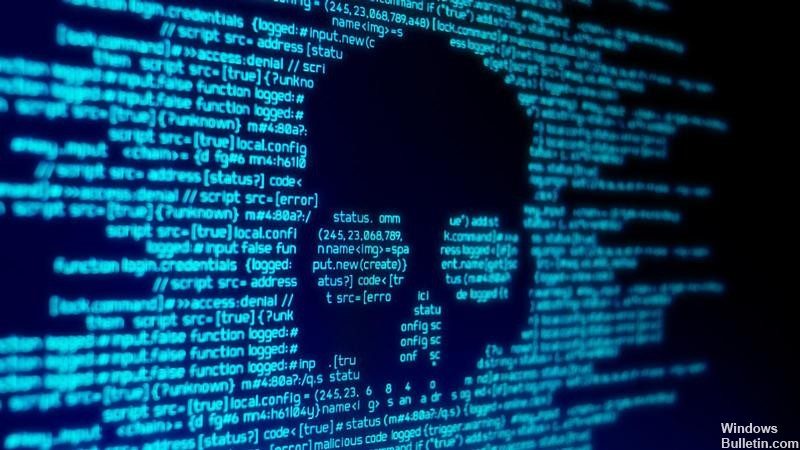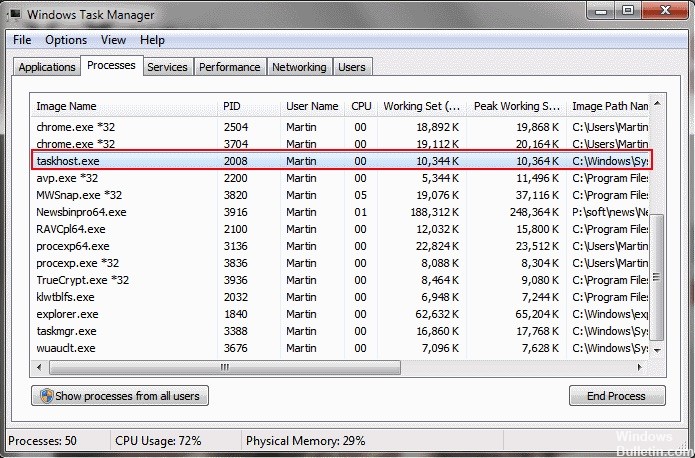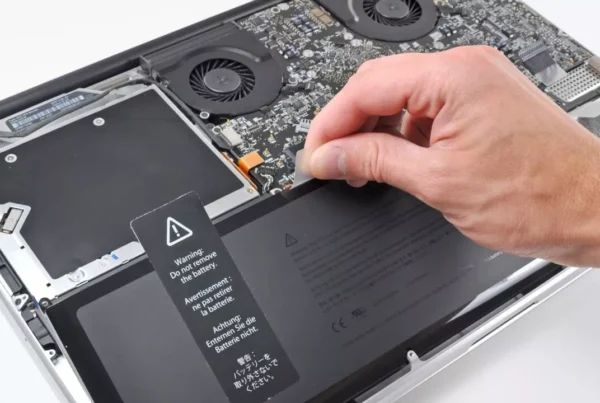RECOMMENDED: Click here to fix Windows errors and get the most out of your system performance
Several users have contacted us with questions after finding taskhostex.exe consuming a lot of system resources or behaving inconsistently. Other users will see a boot error associated with this executable and wonder if it is a legitimate Windows component or a potential security risk. The taskhostex.exe executable is available on Windows 10, Windows 8.1, and Windows 10.

What does Taskhost.exe do?
Windows uses taskhost.exe as the host for all DLL-based services. The procedure is very similar to svchost.exe (discussed previously) because it is a generic method that can load other entities. For this reason, taskhost.exe can open multiple instances of itself to handle DLL files that are not necessarily linked.
TASKHOST is a generic procedure that hosts processes run by DLLs rather than EXEs. At startup, TASKHOST checks the Services section of the registry to create a list of DLL services that it requires to load and then loads them. There can be many instances of TASKHOST, since there will be one instance of TASKHOST for each DLL-based service or group of services (the grouping of services is determined by the programmers who wrote these services).
Since it is an integral part of the operating system, I do not recommend that you remove it.
Due to high CPU consumption, use Performance Monitor to display performance data in real time or from a log file.
The new Resource Monitor enables you to view detailed real-time information about your resources. hardware (CPU, disk, network, and memory) and system resources (including handles and modules) used by the operating system, services, and running applications. You can also use the resource monitor to stop processes, start and stop services, analyze process blocks, view thread chains, and identify process block files.
Is there any risk with Taskhost.exe?
The ability to load external DLL files involves the risk that taskhost.exe may be corrupted or infected by faulty DLL files. Infection of this file is very rare, but most of the time a faulty DLL is loaded and causes excessive memory and CPU usage.
You can view all DLL files currently loaded by taskhost.exe using the Process Explorer application specified in the post svchost.exe.
You can also use the command line /m, then scroll up to show all loaded .dll files.
Should I delete Taskhostex.exe?
No! Disabling or deleting the actual system procedure is extremely dangerous for your computer because many services require it to run. There is a very high probability that by disabling this executable, you will prevent dozens of Windows services from running.
Thus, if you experience startup errors or high resource consumption associated with TaskHostEx, the ideal approach is to fix it rather than remove it.
Use the following instructions to fix startup errors associated with TaskHostEx.exe.

Causes of Taskhost.exe errors
Before fixing errors, it is absolutely necessary to know the cause. Some of the most common Taskhost errors are “taskhost.exe – application error”, “taskhost.exe – error” and “taskhost.exe – access denied”.
- A system file that was accidentally deleted or removed during the antivirus scan.
- Taskhost.exe file corrupted or damaged by virus attack.
- Incorrect or partial installation/uninstallation of some applications.
- Registry key corruption.
- Problems with the hardware device driver
RECOMMENDED: Click here to fix Windows errors and get the most out of your system performance






